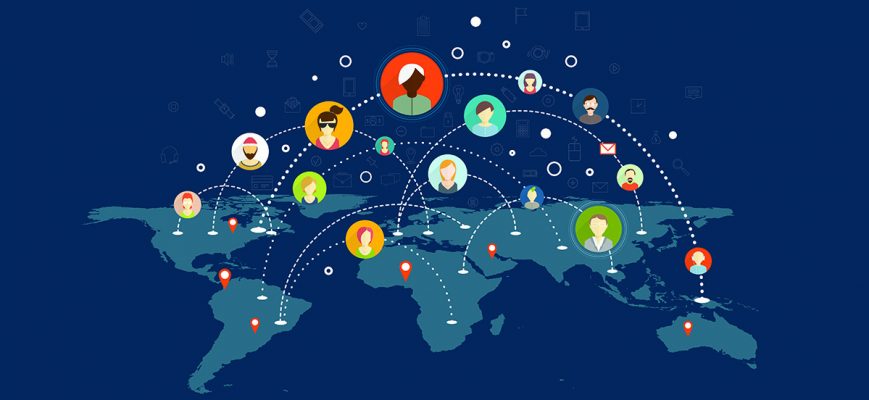What is Globalisation, Internationalisation, Localisation… and Glocalisation?
In an increasingly globalised and borderless world, communicating your global message to local markets is more important than ever. The quality of your translated content — your website, marketing collateral or legal documentation — speaks volumes for your own commitment to quality, and respect for local cultures. You cannot allow sloppy, unclear or inaccurate communication to undermine your business. Terms like “Globalisation”, “Internationalisation” and “Localisation” are often used (and misused) interchangeably in the corporate world. However, they do refer to specific concepts and services offered by the language service sector and, as such, it’s useful to understand exactly what they mean.
Globalisation
Globalisation means preparing your communications and products for the global market. This is essential for companies wishing to expand their reach. GALA (the Globalization and Localization Association) define globalisation as “a broad range of engineering and business processes to prepare and launch products and services internationally”. Globalisation will, of course, include translation; but it also incorporates market research, product management and ensuring your product complies with local laws and standards.
Internationalisation
Internationalisation is a term mostly used in software applications, it refers to IT engineering, code bases and resources. It is the process of preparing your website (and communications) for a specific market. GALA define it as “the design of software code bases and resources that allow an application to be adapted to various locales without requiring changes to the code base.” For example, this might mean adapting your website so it can accommodate right-to-left text, such as Arabic; or adapting form fields to accommodate postal addresses in the local format. (Recently, I was unable to buy an item online, because the delivery form wanted a US postal code — the drop down menu offered all 50 states, but not Spain!) Companies who plan to sell globally online would be wise to consider these issues at the earliest stage of app development.
Localisation
Localisation is preparing your product or service for a specific market. Again, this will likely (but not necessarily) involve translation; but it will also include cultural adaption. It may mean changing images, icons, and even colours to suit the local preferences and cultural values. For example:
- Changing the design of a document to better fit the translated text (right-to-left scripts, or more concise languages).
- Changing images to better meet cultural exceptions and traditions — using photos that feature a specific ethnicity (or many), or more locally-appropriate clothing, such as the hijab.
- Adapting graphics and/or references to suit local values and consumption.
- Changing formats for dates, times, addresses, etc. For example, both the USA and UK speak English, but write dates differently: USA “month/day/year” vs. UK “day/month/year”.
GALA expresses it beautifully: “The aim of localization is to give a product or service the look and feel of having been created specifically for a target market, no matter their language, cultural preferences, or location.”
Planning a Corporate Strategy
When developing a corporate strategy for expansion, simply put, globalisation is the starting point while localisation is the target. However, internationalisation is often necessary, to pave the way for localisation. Remember that internationalisation alone doesn’t consider local preferences and cultural differences. Therefore entering each market requires a multiple processes. However, approaching each market individually, also requires considerable investment.
“Glocalisation”
One strategy that is more cost-effective and is therefore becoming for more popular, is known as “Glocalisation”. Glocalisation, a combination of globalisation and localisation, refers to a process where companies develop their products and services for a global market; ie. globalisation is part of the initial stages of market research and development. Later, before deployment, specific adjustments can be made to adapt the product, and sales mechanisms, for the local market.
Translation
Language Server Providers (LSPs) can play different roles in this process. Sometimes we are simply translating from one language to another. Although it is worth noting, that quality translation is usually not literal; a quality translation conveys the meaning and style of the original text, in the target language. This, naturally, often means using colloquial terms and appropriate cultural references.
In other cases an LSP might localise without translation — such US English to UK English — which uses different spelling, as well as phrasing and tone, however the language (strictly speaking!) is the same.
Transcreation
Transcreation is a relatively new concept in the language sector. It refers to a much freer style of translation, which also incorporates content creation. Wikipedia describes it as the “process of adapting a message from one language to another, while maintaining its intent, style, tone, and context. A successfully transcreated message evokes the same emotions and carries the same implications in the target language as it does in the source language.”
As such, transcreation combines translation and linguistic skills, with market research and marketing. QuickSilver Translate helps companies create, or adapt, their sales materials and websites to different linguistic areas according to their needs (marketing, technical, journalistic, etc.). We take care of writing, reviewing, editing and translating any type of document, using our pool of highly-qualified, professional linguists.

